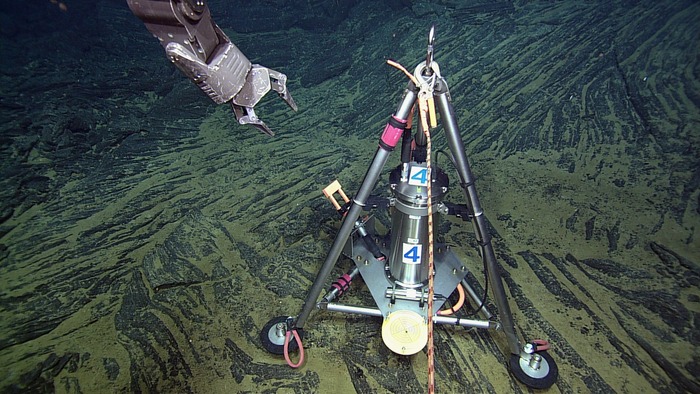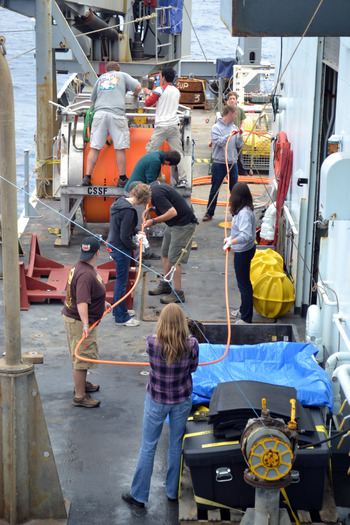- Visions18
- Visions17
- Visions16
- Visions15
-
Visions14
- End of Leg 7
- Leg 6 gets underway
- Calm before the storm
- Reloading for the next mooring
- Leg 5a: A Blur of Activity at A ...
- VISIONS14 Leg 4 Comes to an End ...
- Fire Hose Of Methane Out of Sou ...
- Work, Weather, and Life in the ...
- Troubleshooting, Weather, and t ...
- How Much Methane Comes Out of T ...
- Imaging Einstein's Grotto
- Success at Oregon Offshore
- Busy Days at Hydrate Ridge and ...
- To Sea We Go
- Leg 4 Hydrate Ridge Adventures
- Shallow Waters
- Standing on Two Legs
- High Waves, Deep Methane
- Endurance Required
- Leg 3 Begins
- The Golden Spike
- The Best Laid Plans
- HPIES and Cake and profilers
- Unexpected sightings
- Axial Base Camp
- Slope to Seamount
- VISIONS 14 Leg 2 Begins
- Steaming In Completed Our Work
- International District Complete ...
- Installation Complete At Intern ...
- Intense Activity on the Thomas ...
- Installing J Boxes and Instrume ...
- Completing the Cable and Juncti ...
- Preparing to Install Cable at 8 ...
- Diving in the International Dis ...
- Weather Day in the NE Pacific
- Steaming to Axial Seamount
- Nearly 25 years of dreaming...
- Loading and Mobilizing in Seatt ...
September 2014
August 2014
July 2014
- Construction
- Visions13
- Visions12
- Visions11
- Enlighten
Alas, yesterday the weather gods were angry and so last night we were hove to, waiting for the seas to calm. Luckily the winds dropped and we were able to get the ROV into the water again.
Today marked another milestone with completion of instrument installation at the International District 2 Site. The install was finalized with deployment of a bottom pressure-tilt instrument and then connecting it to the medium-powered Junction Box MJ03D. This site is a geophysical node with instruments to monitor magma migration within the volcano, earthquakes, and inflation and deflation of the seafloor. Small earthquakes at Axial Seamount are caused by migration of melt (magma) beneath the volcano, but they may also be caused by the boiling hydrothermal fluids rising up from beneath the seafloor. This marks the second site completed now at Axial Volcano. Dr. Bill Chadwick, a scientist at Oregon State University and NOAA-PMEL, was watching the deployment live from his office and talking with us over the phone on the R/V Thompson about the installation. He is the designer of this powerful sensor suite.
In addition to preparing for the dive during the day, there were significant deck operations that involved much of the onboard team — engineers, scientists, students, educators, and the ROPOS and ship crew. Major tasks included picking up the very heavy ROCLS frame hosting 15,000 feet of cable on it, and respooling onto the drum by hand 800 ft of cable that had previously been on the seafloor, but which was recovered when ROCLS was brought up from the seafloor. It was hard work, but there were a lot of smiles and the respooling went very well.
The long-range forecast has winds below 10 knots and waves below ~ 5 feet. This means GOOD DIVING WEATHER. To the seafloor we will go.....



